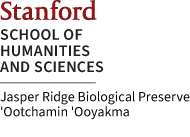Lagerstrom KM, Hadly EA (2023) Under-appreciated phylogroup diversity of Escherichia coli within and between animals at the urban-wildland interface. Applied and Environmental Microbiology: e00142-23.
Year Published:
2023
Abstract:
Wild animals have been implicated as reservoirs and even “melting pots” of pathogenic and antimicrobial-resistant bacteria of concern to human health. Though Escherichia coli is common among vertebrate guts and plays a role in the propagation of such genetic information, few studies have explored its diversity beyond humans nor the ecological factors that influence its diversity and distribution in wild animals. We characterized an average of 20 E. coli isolates per scat sample (n = 84) from a community of 14 wild and 3 domestic species. The phylogeny of E. coli comprises 8 phylogroups that are differentially associated with pathogenicity and antibiotic resistance, and we uncovered all of them in one small biological preserve surrounded by intense human activity. Challenging previous assumptions that a single isolate is representative of within-host phylogroup diversity, 57% of individual animals sampled carried multiple phylogroups simultaneously. Host species’ phylogroup richness saturated at different levels across species and encapsulated vast within-sample and within-species variation, indicating that distribution patterns are influenced both by isolation source and laboratory sampling depth. Using ecological methods that ensure statistical relevance, we identify trends in phylogroup prevalence associated with host and environmental factors. The vast genetic diversity and broad distribution of E. coli in wildlife populations has implications for biodiversity conservation, agriculture, and public health, as well as for gauging unknown risks at the urban-wildland interface. We propose critical directions for future studies of the “wild side” of E. coli that will expand our understanding of its ecology and evolution beyond the human environment.
IMPORTANCE To our knowledge, neither the phylogroup diversity of E. coli within individual wild animals nor that within an interacting multispecies community have previously been assessed. In doing so, we uncovered the globally known phylogroup diversity from an animal community on a preserve imbedded in a human-dominated landscape. We revealed that the phylogroup composition in domestic animals differed greatly from that in their wild counterparts, implying potential human impacts on the domestic animal gut. Significantly, many wild individuals hosted multiple phylogroups simultaneously, indicating the potential for strain-mixing and zoonotic spillback, especially as human encroachment into wildlands increases in the Anthropocene. We reason that due to extensive anthropogenic environmental contamination, wildlife is increasingly exposed to our waste, including E. coli and antibiotics. The gaps in the ecological and evolutionary understanding of E. coli thus necessitate a significant uptick in research to better understand human impacts on wildlife and the risk for zoonotic pathogen emergence. [link to publication]
Article Title:
Under-appreciated phylogroup diversity of Escherichia coli within and between animals at the urban-wildland interface



